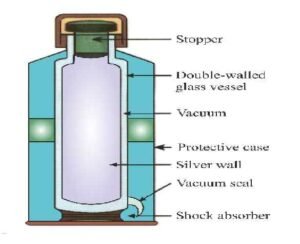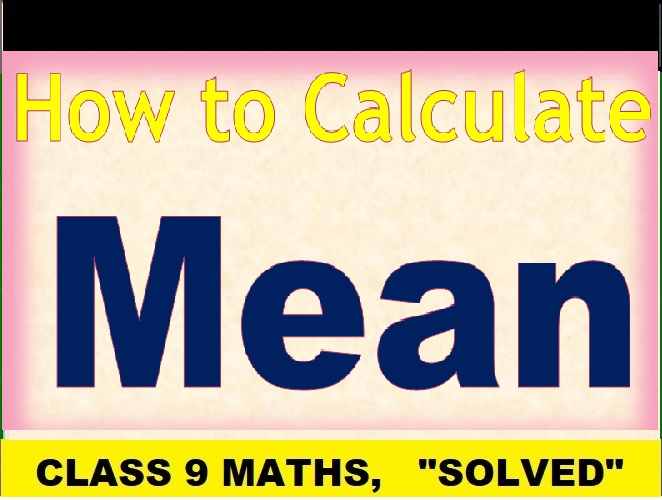Transmission Of Heat Class-7th Goyal Brothers ICSE Physics Solutions Chapter-5 (Heat) Unit-4 (Transmission Of Heat). We Provide Step by Step Answers of Objectives, Fill in the blanks, Match the following, True/False, Incorrect and Correct, Question Type answers of Chapter-5 (Heat) Unit-4(Transmission Of Heat). Visit official Website CISCE for detail information about ICSE Board Class-7.
Transmission Of Heat ICSE Class-7th Goyal Brothers Physics Solutions Chapter-5 Unit-4
| Board | ICSE |
| Class | 7th |
| Subject | Physics |
| Book Name | Goyal Brothers |
| Chapter-5 | Heat |
| Unit-4 |
Transmission Of Heat |
| Topic | Solution of exercise questions |
| Session | 2023-24 |
OBJECTIVE QUESTIONS
Transmission Of Heat ICSE Class-7th Goyal Brothers Physics Solutions Chapter-5 Unit-4
Que: A. Fill in the blanks spaces by choosing the correct words from the list given below:
List : cool, convection, conduction, air, radiation
1. The heat energy from the sun reaches the earth due to the process of radiation.
2. Mercury is the only liquid which gets heated up due to the process of conduction.
3. Mud houses with thatched roofs keep cool in summer compared to the concrete houses.
4. Formation of convection currents in the air are responsible for the formation of weather.
5. Radiant heat can easily pass through air.
Que: B. Statements given below are incorrect. Write the correct statements :
Question: 1. Convection currents are possible in solids.
Answer: Convection currents are not possible in solids.
Question: 2. Heat from the sun reaches the earth by the process of convection.
Answer: Heat from the sun reaches the earth by the process of radiation.
Question: 3. Shining bodies are good absorbers and good radiators of heat energy.
Answer: Shining bodies are poor absorbers and poor radiators of heat energy.
Question: 4. The inner and outer surface of a vacuum flask are painted white.
Answer: The inner and outer surface of a vacuum flask are silvered.
Question: 5. A wooden chair feels colder than an iron chair in winter.
Answer: A wooden chair feels not colder than an iron chair in winter.
Que: C. Write ‘True’ or ‘False’ for the following statements :
| Statements | True/False |
| 1. Radiant heat can easily pass through vacuum or air. | T |
| 2. Two thin blankets are warmer than a thick blanket. | T |
| 3. Conduction is the slowest mode of transmission of heat. | F |
| 4. Borosil glass cracks on direct heating. | F |
| 5. Black bodies are good absorbers, but bad radiators of heat. | F |
Que: D. Tick (√) the most appropriate answer :
1. During day time air becomes warm due to the process of
(a) conduction
(b) convection
(c) expansion
(d) radiation
Answer: option (b) convection is correct.
2. A loose woolen cloth keeps us warm in winter because :
(a) it produces a large amount of heat
(b) it prevents heat radiation from our body by conduction
(c) it prevents heat radiation from our body by convection
(d) it prevents heat radiation by the process of radiation
Answer: option (b) it prevents heat radiation from our body by radiation is correct.
3. The fastest mode of transmission of heat is
(a) conduction
(b) convection
(c) radiation
(d) both (b) and (c)
Answer: option (c) radiation is correct.
4. The only liquid at room temperature in which conduction is possible is :
(a) water
(b) mercury
(c) benzene
(d) alcohol
Answer: option (b) mercury is correct.
5. The process by which impure and warm air inside the room is continuously replaced by fresh air is known as :
(a) convection
(b) ventilation
(c) radiation
(d) thermal expansion
Answer: option (b) convection is correct.
Que: E. Match the statements in Column A, with those in Column B :
| Column A | Column B |
| 1. Bodies which are good absorbers and good radiators of heat. | (a) Vacuum flask |
| 2. A flask which keeps hot things hot and the cold things cold. | (b) Convection in fluids |
| 3. The worst conductor of heat. | (c) Radiation |
| 4. A thermal process responsible for the formation of weather. | (d) Black bodies |
| 5. A process of transmission of heat which requires no material medium. | (e) Vacuum |
Answer:
| Column A | Column B |
| 1. Bodies which are good absorbers and good radiators of heat. | (a) Black bodies |
| 2. A flask which keeps hot things hot and the cold things cold. | (b) Vacuum flask |
| 3. The worst conductor of heat. | (c) Vacuum |
| 4. A thermal process responsible for the formation of weather. | (d) Convection in fluids |
| 5. A process of transmission of heat which requires no material medium. | (e) Radiation |
STUDY QUESTIONS
Transmission Of Heat ICSE Class-7th Goyal Brothers Physics Solutions Chapter-5 Unit-4
Question: 1. (a) What do you understand by the term conduction of thermal energy? In what kind of state of matter does conduction take place?
Answer: Conduction is the process of transfer of transmission of heat energy in solids without the actual movement of particles from their position. If you are holding a copper rod in the flame of a spirit lamp, after some time you can feel hotness in your hand since thermal energy from flame is getting conducted through the copper rod. The state of matter in which conduction takes place is solid. Mercury is the only liquid in which conduction takes place.
(b) Why is conduction not possible in case of liquids and gases?
Answer: The process of transfer of heat energy without the actual flow of matter is known as conduction. Or wan say conduction is the process of transfer of transmission of heat energy in solids without the actual movement of particles from their position. Conduction is happening in solids because, in solids, particles are having very small interparticle space and they are not free to move. In liquids and gases, the interparticle spaces are large as compared to that of solids, and particles are free to move, hence convection is possible in liquids and gases.
Question: 2. (a) What are good conductors? Give four examples of good conductors.
Answer: The materials which allow heat to transfer through it easily are known as good conductors of heat. Examples: Silver, iron, copper, aluminum, etc.
(b) What are bad conductors? Give four examples of bad conductors.
Answer: The materials which do not allow heat to pass through them easily are known as bad conductors. Examples: Glass, mica, ebonite, cotton, wool, etc.
Question: 3. Describe an experiment to prove that water is a bad conductor of heat energy.
Answer: Experiment to prove that water is a bad conductor of heat energy:
- Take a hard glass test tube and drop a piece of ice wrapped up in copper wire gauze.
- Fill 3/4th of the test tube with ice-cold water and clamp it in an iron stand.
- Heat the test tube near its mouth with the help of a burner.
- After a few moments, we can observe that water near the top starts boiling and steam is given off freely.
- The ice placed at the bottom does not melt because the heat supplied to the water is unable to melt the ice.
- This shows that water is a bad conductor of heat.
Question: 4. Give three practical applications of good conductors.
Answer: Metals are used for the manufacturing of cooking vessels because they can absorb heat energy and transfer it into food efficiently. Mercury is used as a thermometric liquid because it is a good conductor of heat. Copper tubing is used in automobile radiators to cool the hot water coming from the side of engine.
Question: 5. Explain the following :
(a) Why do we wear loose woolen clothes in winter?
Answer: We wear woolen clothes because they trap the bodies heat to keep us warm. On the other hand, thick and dark-coloured clothing is good in winter as it absorbs the sun’s rays to keeps us warm.
(b) Why do the birds puff up their feathers on a cold day?
Answer: Birds puff up their feathers in winter because by doing so they trap a large amount of air in their body which in turn acts as an insulator and does not allow the heat from their bodies to flow out.
(c) Why are the houses with thatched roofs cooler in summer than the concrete houses?
Answer: Thatched roof contains a large amount of trapped air. The heat from outside does not flow inside through the roofs because air is a bad conductor of heat. Thus the houses remain cool in summer.
(d) Why are the cooking pots provided with plastic or wooden handles?
Answer: Wood and plastic are bad conductors of heat. So, we can hold the pots with wooden or plastic handles directly, without burning our hands.
(e) Why does an iron chair feel colder than a wooden chair in winter?
Answer: A chair made of iron appears colder because iron being a good conductor of heat, it looses its heat to the surrounding at night. But the wooden chair remains the same because wood is a bad conductor of heat and so no heat is lost from it.
(f) Why are ice blocks wrapped in saw dust of woolen blanket?
Answer: The sawdust or woolen blanket contains a large amount of trapped air, which acts as an insulator and does not allow the heat from outside to reach the ice.
(g) Why does an ice box have double walls?
Answer: The iceboxes are generally double-walled iron boxes. The space in between the wall is filled with glass wool, which is a bad conductor of heat. So, the heat from outside does not reach the ice and hence it does not melt.
(h) Why does a marble floor feel colder in winter than a carpeted floor?
Answer: The marble floor which transmits heat energy easily feels colder and the carpet floor which does not allow heat to transmit feels warmer.
Question: 6. (a) What do you understand by the term convection of thermal energy?
Answer: Convection is the process of transmission of heat by the actual movement of particles between different temperatures. The particles absorb heat energy from the hot source and it will move into the colder region. The thermal process responsible for the formation of weather is convection in the air.
(b) Why is convection not possible in solids?
Answer: Convection is not possible in solids because for convection to take place the molecules of a substance should be free to move like liquids and gases. The molecules of a solid are tightly packed together, thus making it difficult for molecules to move around for convection to take place.
Question: 7. Describe an experiment to prove (a) convection currents in liquids, (b) convection currents in gases.
Answer: (a) Aim: To show convection in liquid.
Materials required: Round bottomed flask, water, a burner and mustard seeds.
Procedure: Fill a round-bottomed flask three-fourths with water. Heat it up using a burner. Drop a few mustard seeds into the flask. Observe the movement of the mustard seeds inside the flask, as the water gets heated and starts boiling.
Observation and conclusion: The pattern of the rise and fall of the mustard seeds is actually the pattern of the convection currents of water molecule.
Question: 8. (a) What do you understand by the term ventilation? How do convection currents in air help during ventilation?
Answer: The process by which impure and warm air inside a room is continuously replaced by fresh air from outside is called ventilation. The carbon dioxide rich exhaled air , being warm and lighter rises up It then passes out through the ventilators in a room This causes a drop in pressure within the room Thus the cold can fresh air enters from the doors and windows to fill up the gap This continuous circulation of air is maintained with the room by convection currents.
(b) Describe black body radiation with proper example.
Answer: Blackbody radiation, energy radiated by any object or system that absorbs all incident radiation. The term usually refers to the spectrum of light emitted by any heated object; common examples include the heating element of a toaster and the filament of a light bulb.
Question: 9. Explain the following :
(a) Why do we wear white or light coloured clothes in summer?
Answer: We prefer white coloured clothes in summer because white colour is poor absorber of heat and so they keep us cool during summer.
(b) Why do we wear dark coloured or black clothes during winter?
Answer: The transfer of heat by radiation process does not require any medium. We prefer wearing dark-coloured clothes in winter because dark surfaces absorb more heat than light surfaces.
(c) Why is the radiator of a motor car engine painted black?
Answer: The heat generated by the engine is efficiently radiated due to the dull black paint. The black paint emits the most heat through radiation (highest emissivity). This improves the heat transfer out of the radiator when air isn’t moving through the radiator.
(d) Why are sintex water tank painted white in hot countries?
Answer: The water stored in the white sintex tank keeps cold because of less absorption and a good reflection of radiant heat from the white body.
Question: 10. Draw a neat diagram of a vacuum flask. Explain carefully how the heat losses due to conduction, convection and radiation are minimized?
Answer: Heat loss due to conduction is prevented by placing the calorimeter box in a well lagged vessel using wool or cork material. Heat loss due to convection is prevented by placing a lid on the box. Heat loss due to radiation is minimized by polishing the box in order to smoothen it.

— : end of Transmission Of Heat ICSE Class-7th Goyal Brothers Physics Solutions Chapter-5 Unit-4:–-
Return to- ICSE Class -7 Goyal Brothers Physics Solutions
Thanks
Please share with your friends if you find it useful


